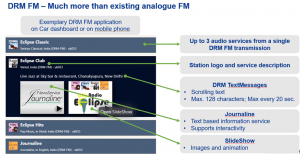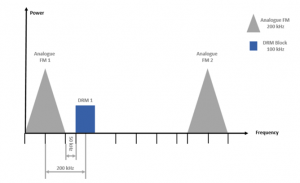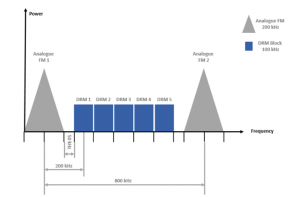Comments by Hon Chairman of the India Chapter, Yogendra Pal, on the recommendation to allow News and Current affairs programs on private stations and to ensure that FM reception facility is provided in Mobile Phones:
In India, private radio stations are only licensed to broadcast in FM band. 388 private FM channels are already operational in over 100 cities and this number is likely to increase soon. These are in addition to the broadcasts of by All India Radio (AIR)/Prasar Bharati, the public service broadcaster, who is providing terrestrial radio services in MW, SW as well as FM bands) and broadcasting by the Community Radio Stations, which are allowed on air transmission in FM band for non-commercial use.
News and Current Affairs Now on Private FM Radio Stations
Currently, the private FM radio stations are not allowed to broadcast any news or current affairs programs. They are, however, allowed to broadcast AIR’s news bulletins (only), without any alterations. They are also allowed to share information related to local events and local issues like traffic blockade, examination updates, utility services updates etc. They have thus been demanding that they should be permitted to broadcast news and current affairs in the same way as as the Prasar Bharati Radio Channels or news and current affairs television channels.
Their long pending demand is likely to be fulfilled soon as the Regulator (Telecom Regulatory Authority of India – TRAI), after consultation with all the stakeholders, has recommended to the Ministry of Information & Broadcasting, Govt to India, on 5th Sept 2023, that they allow the private FM radio operators to broadcast news and current affairs programs, limited to 10 minutes in each clock hour and in accordance with the programme code of conduct as applicable to AIR news content.
AIR’s news broadcasts are confined to 20-30 major languages and transmitted through 47 stations, but the private FM stations opines that due to their presence in many cities they will be able to establish real-time communication with their listeners by employing local languages and dialects; and will be able to deliver news that is highly relevant to local audiences without imposing any cost burden on them.
As shown in Fig 1 below, in FM band, in addition to multiple audio programs, DRM digital radio standard enables transmission of text information too, in multiple languages, within the allocated spectrum.

The regulator has already recommended to the Govt of India on 1st Feb 2018 that the private sector should be permitted to provide digital radio broadcasting services within the existing frequency band of 88 – 108 MHz used for FM radio broadcasting. Though this recommendation is still to be accepted, with the acceptance of both these recommendations, Indian private FM radio stations would be able to provide news not only in audio but also in text, and in multiple Indian languages, using DRM digital standard. Thus, they would also be able to fulfil their social responsibility to serve the hearing-impaired users, as is being already done by Indian TV networks displaying sub-titles.
DRM digital offers EWF (Emergency Warning Functionality) as a native core feature. The EWF alarm signal allows authorities to demand the switch-over by DRM receivers in the affected area to the emergency programme (typically provided by a public broadcaster), and to automatically switch on a DRM receiver in standby mode. A user who is outside the affected area can continue to enjoy the normal programme in DRM digital. Secondly, the EWF emergency programme comprises both audio and text/visual information via Journaline, with the text enhancing the audio component, providing detailed information for on-demand look-up on the radio set (without the need for internet), and all this in multiple languages simultaneously. Thus, with the acceptance of the recent recommendation, going DRM digital, the private FM stations would also be able to carry the emergency warnings signals and fulfil another social obligation. This would be much more effective as the private FM stations are present in many cities and towns.
FM radio receivers in mobile phones
Initially for listening to FM Radio channels, standalone radio receivers were used. With the advancement of technology, FM radio receivers got integrated with Mobile handsets. This helped in expanding the reach of the FM Radio channels and hence resulted in the growth of the FM Radio sector in India. The availability of FM Radio receivers in mobile handsets also helped in bringing a young audience. However, off late, with the introduction of 4G handsets, device manufacturers and operating system (iOS, Android) have been turning the FM tuners off, possibly to support their music streaming services.
In this connection, Indian IT Ministry had, in the recent past, issued an advisory to mobile phone manufacturers in India to continue to provide this feature in their models.
The regulator TRAI has considered this issue too and recommended that functions or features pertaining to FM radio should remain enabled and activated on all mobile handsets having the necessary hardware; and built-in FM radio receiver in mobile handset must not be subjected to any form of disablement or deactivation. The regulator has further recommended that a Standing Committee may be established by the Govt of India to oversee and monitor the compliance of enabling the FM Radio in Mobile Handsets by mobile phone manufacturers (or importers).
The current built-in FM antenna or earphone jack antenna in mobile phones can receive DRM FM signals too. In addition, support for DRM FM-band reception on phones does NOT require dedicated or special hardware or chips, as existing FM front ends can be configured to capture the DRM on-air signal too. The digital processing and decoding of the DRM services can then be carried out in software, using the “STARWAVES DRM SoftRadio” app which is available on Android app stores (Google, Amazon, Huawei).The permission to carry news and current affair programs by the private FM stations and the announcement to adopt the DRM in FM band (still pending) will motivate mobile manufacturers to invoke the DRM digital reception too, in addition to analogue FM, by default on their future mobile phone models.
It is suggested that while allowing private FM stations to carry news and current affairs and announcing the policy for use of DRM in FM band by Prasar Bharati, Private Broadcasters and Community Radio Stations (CRS), Govt of India may also make it mandatory for all mobile phone manufacturers to provide DRM FM reception facility, including EWF, in all mobile phones and all entertainment systems installed in cars.
Easiest and most efficient ways to Introduce DRM digital transmission in FM band by private operators
DRM is very flexible and can be introduced in several ways, some of these are:
Running the existing FM transmitter in DRM digital
200 kHz bandwidth is allocated to a broadcaster for an analogue channel, In the allocated 200 kHz bandwidth, 2 DRM blocks can be transmitted, thereby providing up to 6 audio services and additional multimedia services like Journaline, DRM text message etc.
This is easiest and most efficient way to start broadcasting in digital in the FM band, from the existing transmitter (provided it is capable to work in linear mode for digital signal transmission), within the allocated spectrum and using all other existing infrastructure.
Initially a private broadcaster can use this method to introduce digital services in time shared basis i.e. analogue and digital for some time each.
Taking adjacent spectrum and simulcast operation
A FM transmitter, in addition to analogue signal, can also carry one, two or more DRM blocks without any guard band between the DRM blocks and from the analogue signal. The number of DRM blocks from a single transmitter depends on the bandwidth of the transmitter e.g., a transmitter of 600 kHz bandwidth, in additional to the analogue signal, can carry up to 4 DRM blocks, 2 on either side of the analogue signal, as shown in Fig 2.

If a 100 kHz spectrum, below or above the allocated bandwidth of 200 kHz, is allowed to a private broadcaster, he can use it to carry 1 DRM block. If 100 kHz spectrum is allowed on either side of the 200 kHz allocated bandwidth, the broadcaster can carry 2 DRM blocks (in addition to analogue).
Install DRM transmitter in white space
DRM can fit anywhere in the whitespaces too in the FM band.
A DRM block from a separate transmitter can be inserted anywhere in the white spaces in between the analogue FM transmissions by giving a guard band of 50 kHz i.e., with 200 kHz centre-to-centre spacing between analogue and DRM block (Fig 3).

Multiple DRM blocks can also be transmitted from a transmitter without giving any guard band between the DRM blocks. The number of DRM blocks from a transmitter depends on the bandwidth of the transmitter e.g., a transmitter of 600 kHz can carry up to 6 DRM blocks. These blocks as a unit can be inserted anywhere in the white spaces in between the analogue FM transmissions by giving a guard band of 50 kHz i.e., with 200 kHz centre-to-centre spacing between 1st and last DRM block from the analogue signals. As shown in Fig 4, up to 5 DRM blocks can be inserted from a separate transmitter in the white space of 600 kHz between two FM transmitters.

To Sum up
The DRM Digital Radio Broadcasting Standard has been designed by the broadcasters, for the broadcasters, with the active assistance and participation of both the transmitter and the receiver manufacturers and other interested parties (such as regulatory bodies). DRM is a high-quality and feature-enhanced digital replacement for the former analogue radio broadcasting standards AM and FM; as such it can be operated with the same channelling and spectrum allocations as currently employed. At the same time DRM is the only standard which can operate smoothly alongside ongoing analogue services in all the broadcast bands.
As outlined above, DRM in the FM band can be rolled out in many ways. With the permission to carry News and Current affairs programs by the private broadcasters, they would be able to carry news items in text mode, in multiple Indian languages. So they would increase the effectiveness of their programs and would also be able to fulfil their social responsibility towards hearing-impaired persons.

















